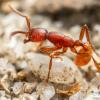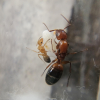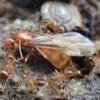The biggest and most beautiful oak trees in the south bronx always have a carpenter ant colony and likewise these ants are only ever found in the very best of the trees.
So I decided to look up "carpenter ants and oak trees" to find out more about their relationship and you must imagine my horror at being offered pest control serviced to "protect" an oak tree from a "carpenter ant attack"
--Now I do have a pro-ant bias, but this seems... unlikely. Especially because you never see carpenter ants in young oak trees (or in spindly unhealthy trees) they like the older trees and I assumed this was because such trees would have natural hollows and nesting spaces, as well as retaining heat in the cold and moisture on hot days... likewise a large leafy oak is home to many creatures that the carpenter ants would enjoy having for their meals... alongside the steady diet of sweets they find easily since these are NYC ants who have all the sugar they want.
But, I thought I'd check.
Can carpenter ants harm an oak tree?
- Formiculture.com
- Forums
- Gallery
- Members
- Member Map
- Chat



















